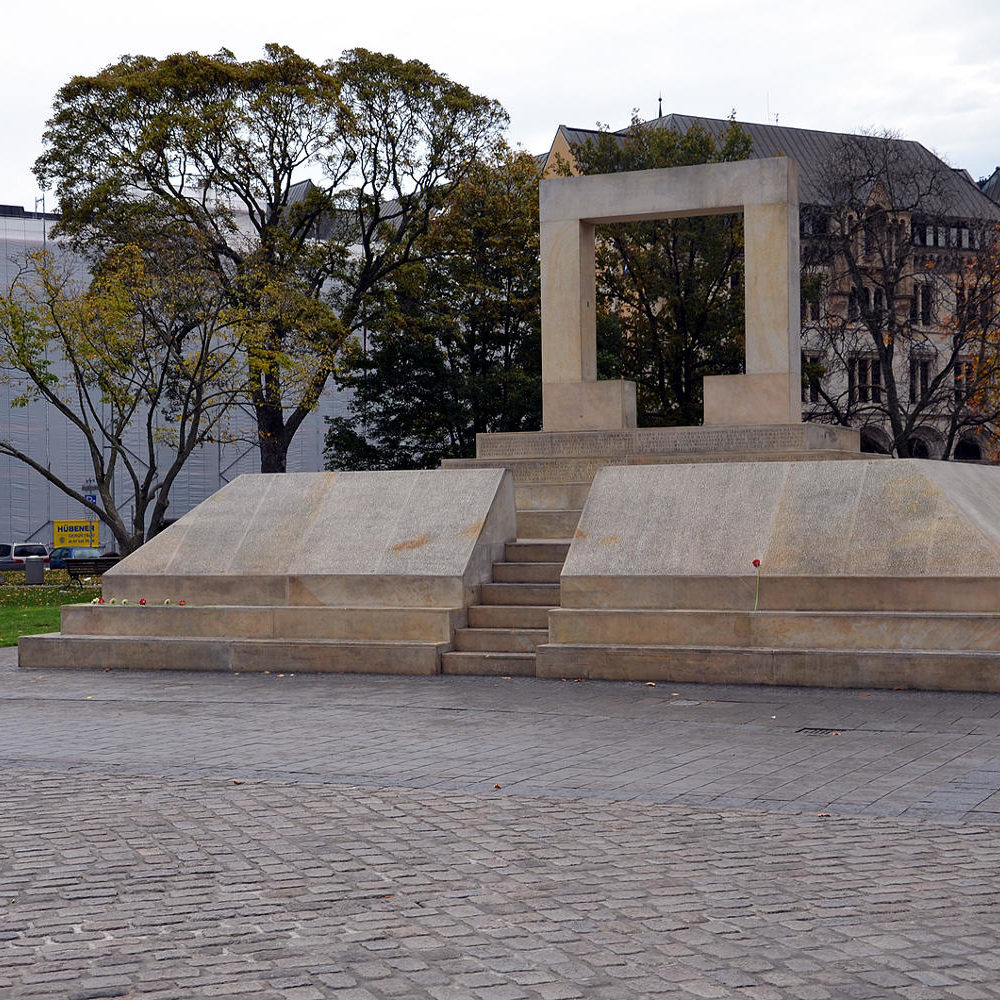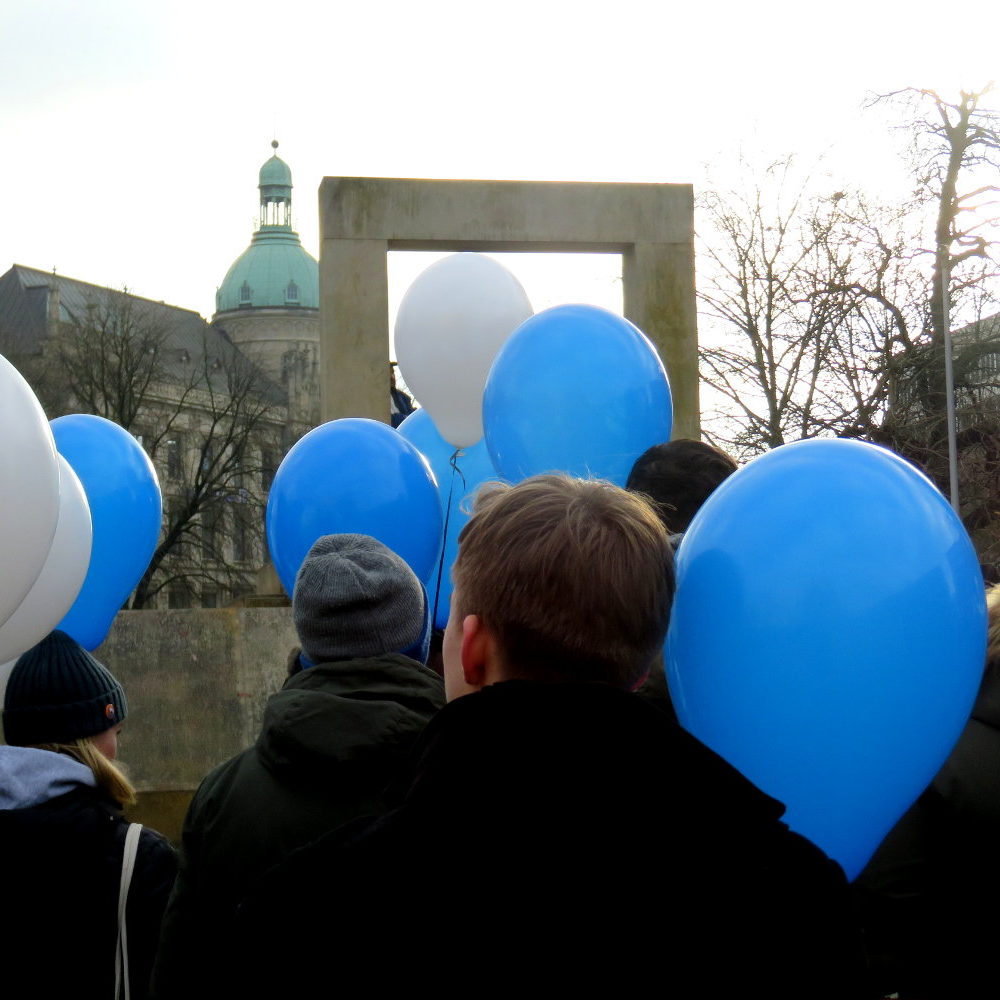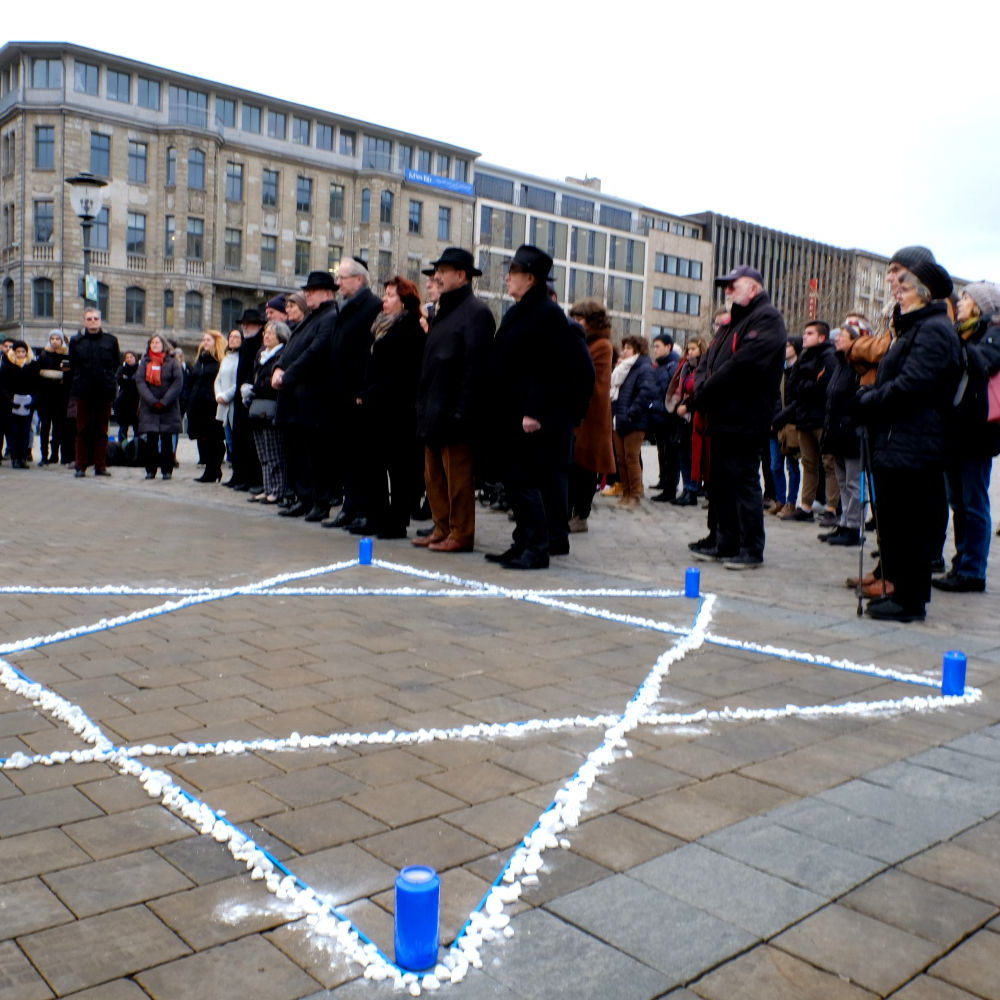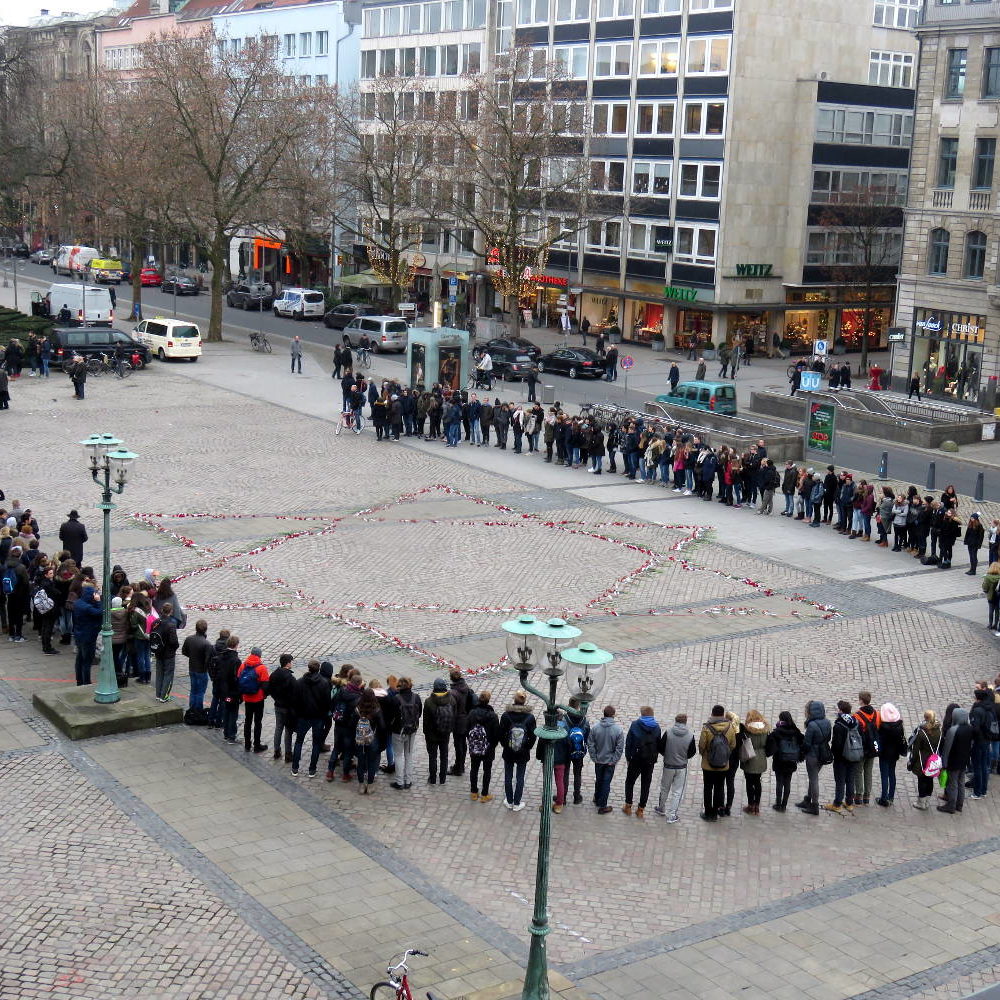Inaugurated in 1994, the memorial next to the opera house commemorates Jewish citizens of Hanover that were deported and murdered. Although faced with a measure of opposition, the civic initiative Memorial association [Memorial e.V.] succeeded in erecting this important site in the heart of the city. The costs for the memorial were met by private donations.
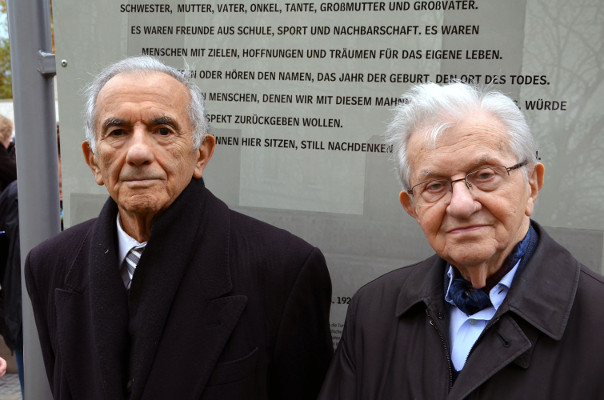
Mounting persecution
Following their victory, the National Socialists adopt anti-Semitism as their radical state doctrine. It gets underway on 1 April 1933 with the first “Jewish boycott” against Jewish businesses and self-employed people. Jewish civil servants and employees are dismissed from public service, and lawyers and doctors are banned from practising. This is intended to make it very clear to them that there is no longer any place for them in the “new” Germany. The aim behind these measures is to get them to emigrate. This policy becomes more radical in stages until the official ban on emigration is enacted in October 1941. Thousands of laws and directives provide a semblance of legality to the discrimination. In parallel, boycotts, discriminatory taxation and ruinous tariffs lead to economic impoverishment, making emigration difficult and, for many, impossible.
New Ghettos: “Jewish Houses”
In 1939, there are still about 2300 Jewish people living in Hanover. Once the war begins the borders become virtually impenetrable, nevertheless by 1941 their numbers shrink to about 1,600. On 3 September 1941, they are forced to move into “Jewish houses” – a preparatory step before being deported. The aim of Nazi racial policy is now no longer not just expulsion from Germany, but the annihilation of European Jewry. Many Hanoverians who had fled were forcibly repatriated when their countries of exile came under military occupation – often passing through their former homeland on their way to the death camps of Eastern Europe.
Inscription
“This memorial has been erected to the lasting memory of over 6800 Jews of Hanover: many families had lived here for generations.
After 1933, they were humiliated by the National Socialists, disenfranchised, expelled, driven to suicide or killed. In 1941, the remaining Jewish men, women and children were forced to vacate their homes and, abetted by the city council, were crammed into “Jewish houses”. From here they were uprooted from the community without any appreciable resistance from the rest of the population, deported and murdered.
The transports took place on 28 October 1938 to Poland, on 25 June 1939 to Poland, on 15 December 1941 to Riga, on 31 March 1942 to Warsaw, on 23 June 1942 to Theresienstadt, on 2 March 1943 to Auschwitz, on 16 March 1943 to Theresienstadt, on 30 June 1943 to Theresienstadt, on 11 January 1944 to Theresienstadt, and on 20 February 1945 to Theresienstadt.
There were only a few survivors in Hanover: on 10 April 1945, twenty-seven were liberated by American soldiers from the Ahlem concentration camp. The names of those murdered – if known – are recorded on this memorial. Erected 50 years later by a Hanoverian citizens’ initiative, supported by many members of the public and by the city of Hanover.
Hanover, 9 October 1994”
Names and biographical data
Inscribed are the names of 1,935 Jewish citizens of Hanover. Those who were deported are listed with their age at the time of being deported, other victims with their year of birth. What happened to them is also detailed, if known. Victims whose place of death is unknown are recorded simply as missing: “Verschollen”.
A walk-through monument
Designed by the Italian artist Michelangelo Pistoletto as an open-plan monument so people can walk through it and around it, the idea was to draw in the onlooker inviting them to take a closer look at the names and fates. This has also had unintended consequences and knock-on effects as, especially in warm weather, the surrounding park has become a central meeting point for the local youth to party.
Additional online information
Culture of Remembrance Downloadable booklets and flyers [in German]
Culture of Remembrance Downloadable information and memorial panels [in German]
Wikipedia entry Memorial to the murdered Jews of Hanover
Information portal to European sites of remembrance Memorial to the Murdered Jews of Hanover
Further reading: Click here
Texts and images: Michael Pechel

